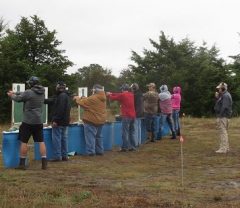There is a popular belief across many segments of society that you should specialize in one thing, and do that thing well. That is why pediatricians don’t do spinal surgery, and plumbers don’t build sun rooms. At the same time, within any specialization, having a variety of skills can lead one to revelations that lead to improvements in the other skills in that set. Hence, a home builder learns to build swimming pools, which leads to improvements in how he designs slab foundations. You can be over-specialized.
Shooting pistols works the same way. If a person’s experience is limited to one gun, they have not experienced the wide variety of trigger pulls, grips, and recoil that exist across the spectrum. Learning those differences can be crucial to your development as a shooter. Triggers are especially problematic, as there are so many variations extant, involving take-up, hard break (crisp), soft break (ramp), stacking, and over-travel. When you have experienced several of these, you will become more sensitive to the actual role of the trigger in the process, as well as what you have to do to manage it efficiently. That leads to greater adaptability and flexibility in shooting. In terms of defensive shooting, it also leads to greater speed, as you will be better able to coordinate acquiring a sight-picture, hold control, and trigger control. Each new pistol I learn to shoot makes me better with all of them.
However, while owning several pistols is nice (some would say inevitable), it is not necessary. Most commercial gun ranges have pistols for rent (for use at the range), sometimes dozens of them. Pick out a few different models, from different manufacturers, and rent one every two weeks. See what effect this has on your original gun. You may find something else that suits your style better.

